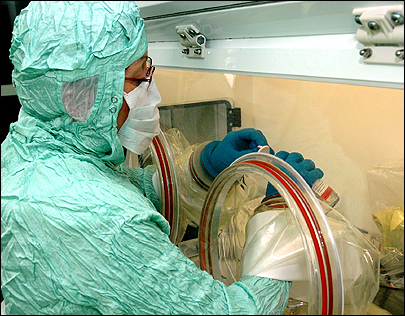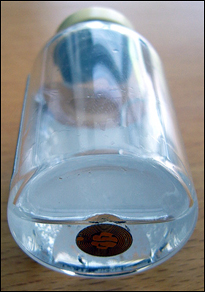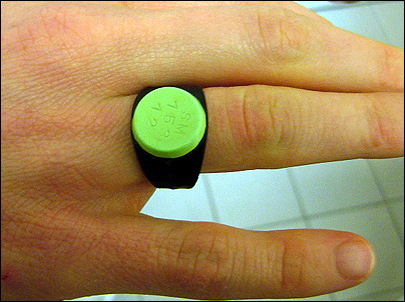A Czech hospital is using radio frequency identification to track vials of expensive chemotherapy medication, in an effort to better manage the potentially dangerous process of mixing the medication with infusion solution in IV bags, as well as to ensure better treatment and increased safety for cancer patients. The medication can be harmful if inhaled, or if it comes into contact with skin.
As part of a research project, the Masaryk Oncological Institute, operated by Masaryk University’s School of Medicine in Brno, implemented an RFID solution with help from IBM Global Technology Services and funding from the Czech Ministry for Education.
The project—a series of RFID applications for the oncology hospital—began in November 2006 and will run until 2009. The goal is to use RFID to identify patients and personnel, simplify and speed up the inventorying of high-cost medical supplies and deter theft.
The hospital started the project because it wanted to prove RFID could deliver economic and safety benefits, while also gaining experience with the technology. It chose to tag oncology drugs because they are among the most expensive used in the institute, and because the potential impact of human error is high: The cytostatic agents used in the medicine to inhibit the growth of malignant tumors could prove severely harmful if administered to the wrong person or in the wrong dosage.
Matej Adam, from IBM’s European health-care solutions practice, was involved in the project and says individual vials of the medicine were not tracked before the RFID application was implemented. Only cartons of the drug were tracked manually, he notes, by means of pen, paper and bar codes.

In the first step of the process, the hospital’s in-house pharmacists attach an 8-millimeter-wide circular, passive 13.56 MHz RFID tag to the base of each vial (or ampoule) of cytostatic drugs, stored in a cardboard carton holding up to 20 vials. After testing ordinary self-adhesive tags, IBM and the hospital decided to tag vials with Tagsys‘ Nano-Size RFID tags, which use the Icode protocol. While tagging each vial, the pharmacist reads the tag with an interrogator and links the type and amount of drug in each vial to the tag’s unique ID number.
The bar-coded carton is taken to another part of the institute by a hospital worker. Before RFID was implemented, this was the last point at which the bar code could be used to track the ampoules. Once the box was opened and a vial was removed, the bar code was rendered useless and the pharmacy could not positively identify which vials belonged to which cartons. Individual tracking of ampoules is important because they are typically used to prepare several treatments.
In a room outfitted with safety equipment designed for working with dangerous chemicals, a hospital pharmacist adds the drug to an IV bag filled with a sterile solution. This enables the pharmacist to administer the patient’s medicine intravenously. The staff member wears a protective suit and mask, with hands inserted through airtight openings in an apparatus called an isolator. The isolator looks somewhat like a baby incubator, and serves as a safe and clean environment for processing sterile drugs by controlling airflow and pressure.
Working within the isolator, the employee takes an RFID-tagged IV bag and inserts the proper amount of cancer medication into it. Embedded in adhesive labels applied to the bags, the tags operate at 13.56 MHz and comply with the ISO 15693 standard. The patient’s name and other basic information are printed on the label. The pharmacist performing the work wears a ring-shaped Tagsys passive 13.56 MHz Nano-Size tag on one finger. After mixing the medication with the IV solution, the pharmacist reads the tags on the IV bag, the ID ring and the vial, using an interrogator installed inside the isolator. The bag is removed from the isolator, and another reading is taken when the worker passes the IV bag through its output hatch.
Fixed and mobile readers in the application are supplied by RightTag and ACG. The RightTag handheld readers are employed at points where users need to read several tags simultaneously. ACG readers, mounted on desks and in the isolator, are utilized for reading one tag at a time. After testing a number of tags for RF interference, IBM decided to go with passive, HF tags complying with the Icode and/or ISO 15693 standards. IBM also implemented a Sato RFID printer, to print labels for the IV bags, as well as IBM WebSphere RFID Premises Server, a type of RFID middleware.
The information collected via RFID allows the hospital to track the specific substance used in preparing the medication, as well as the amount of the substance used, the name of the pharmacist mixing the drugs and the time the work was done.
Later, when the rest of the RFID implementation is deployed at the institute, the RFID tag worn by each patient will be read before any medication is given, confirming electronically that the substance is going to the intended recipient. The nurse administering the medicine will also scan the RFID tag embedded in her ID badge, enabling hospital administrators to know which nurses worked with which patients. The choice of RFID tags used for the patient and nurse IDs has not yet been finalized, though they are expected to operate at 13.56 MHz and comply with ISO 15693.
Jan Rydval, an IT consultant for IBM Global Services, says there haven’t yet been any performance problems, since the application is used by pharmacy workers only. When the RFID system is expanded throughout the hospital, IBM plans to add additional server power.
In a prepared statement, Rostislav Vyzula, a professor at the institute, said, “The RFID solution from IBM allows us to go a step further than just tracking medication. It allows us better manage the medication of patients taking the cancer medication Zytostatika.” Vyzula and other institute staff could not be reached for further comment.



